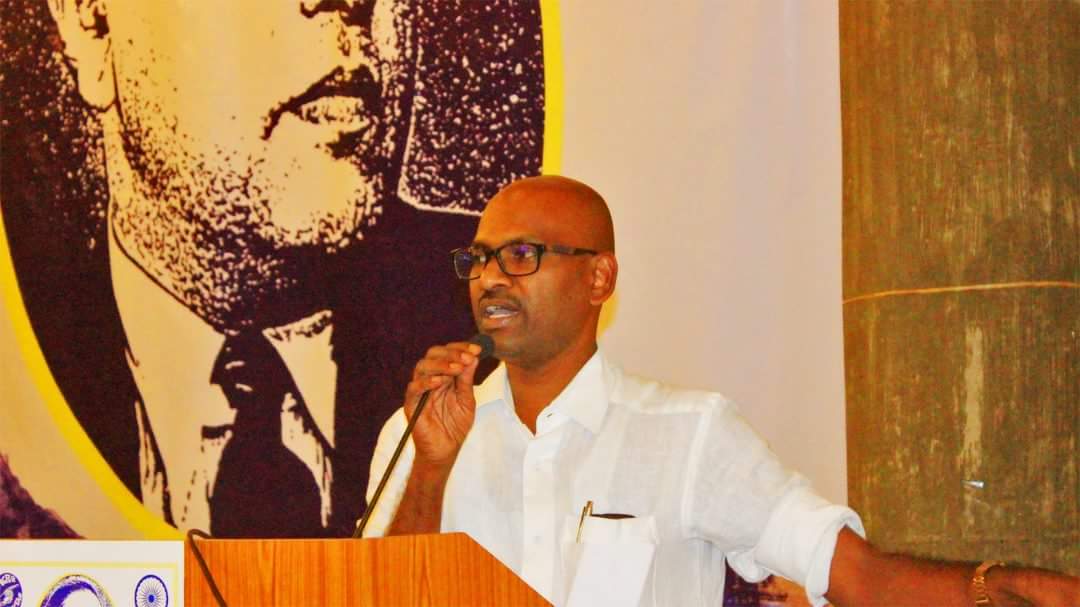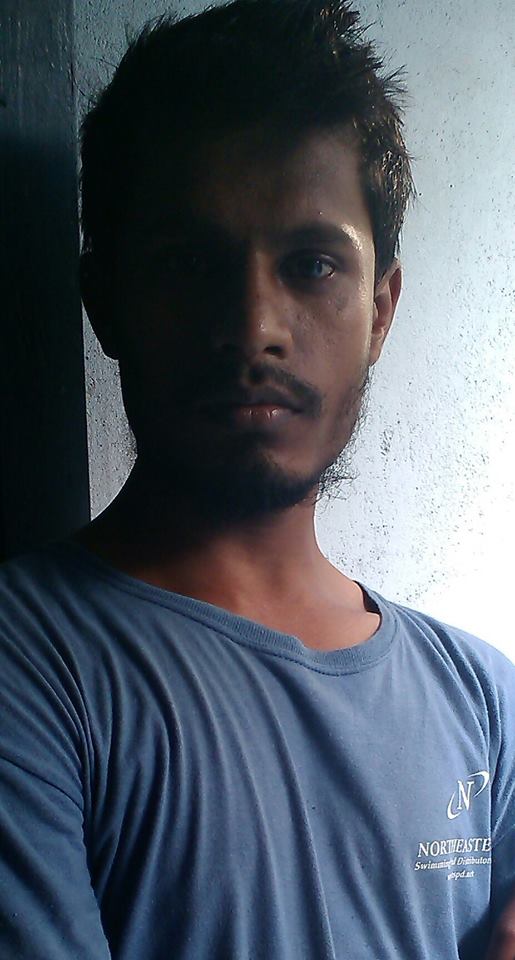Karthik Navayan
 Atrocities on the Scheduled Castes and Scheduled Tribes take various forms – both visible and invisible. However it is the visible forms of atrocities that are defined and included in Scheduled Castes and Scheduled Tribes (Prevention of Atrocities) Act 1989. Visible forms of atrocities are taking place in rural India, and invisible forms of atrocities are taking place in urban life; the invisible atrocities are a more dominant form of atrocity. The invisible kind of atrocities frequently take place in universities and other educational institutions.
Atrocities on the Scheduled Castes and Scheduled Tribes take various forms – both visible and invisible. However it is the visible forms of atrocities that are defined and included in Scheduled Castes and Scheduled Tribes (Prevention of Atrocities) Act 1989. Visible forms of atrocities are taking place in rural India, and invisible forms of atrocities are taking place in urban life; the invisible atrocities are a more dominant form of atrocity. The invisible kind of atrocities frequently take place in universities and other educational institutions.
Human rights organizations including dalit organizations mostly concentrate on the protection of dalit human rights after atrocities have taken place. No people’s organization or government authorities are showing interest in implementation of preventive measures. The invisible atrocities on the dalits can be prevented through the implementation of preventive provisions in the Scheduled Castes, Scheduled Tribes (Prevention of atrocities) Act 1989 like: 17. Preventive action to be taken by the law and order machinery.
(1) A District Magistrate or a Sub-divisional Magistrate or any other Executive, Magistrate or any police officer not below the rank of a Deputy Superintendent of Police May, on receiving information and after such inquiry as he may think necessary, has reason to believe that a person or a group of persons not belonging to the Scheduled Castes or the Scheduled Tribes, residing in or frequenting any place within the local Limits of his jurisdiction are likely to commit an offence or have threatened to commit any Offence under this Act and is of the opinion that there is sufficient ground for proceeding, declare such an area to be an area prone to atrocities and take necessary action for keeping the peace and good behavior and maintenance of public order and tranquility and may take preventive action.
(2) The provisions of Chapters VIII, X and XI of the Code shall, so far as may be, apply for the purposes of sub-section (1).
(3) The State Government may, by notification in the Official Gazette, make one or more schemes specifying the manner in which the officers referred to in sub-section (1) shall take appropriate action specified in such scheme or schemes to prevent atrocities and to restore the feeling of security amongst the members of the Scheduled Castes and the Scheduled Tribes.’
There are 195 districts in 12 states– Andhra Pradesh, Bihar,Gujarat, Jharkhand, Karnataka, Kerala, Madhya Pradesh, Maharashtra, Orissa, Rajasthan, Tamil Nadu, Uttar Pradesh– of India which are declared as atrocity prone declared by the states and are listed as such by the Ministry of Social Justice and Empowerment, Government of India.
National Dalit Forum sent applications under Right to Information act to these 195 District Magistrates to know the implementation of preventive measures under Scheduled Castes and Scheduled Tribes (Prevention of atrocities) Act 1989, in March 2010.
The questions asked under Right to Information were:
1) Provide the list of atrocity prone areas that have been identified in your district
2) What are the preventive measures initiated in the atrocity prone areas
3) Provide the information on financial resources to meet the expenses of the preventive measures, and also provide the information of where the expenses have been booked, in which budget code and account number.
Response and analysis:
* Out of 195 applications, we received 150 acknowledgements; 45 districts magistrates may have managed not to send acknowledgements,
* About 20 applications were rejected saying that the preventive measures under Scheduled Castes and Scheduled Tribes (Prevention of Atrocities) Act 1989 will not come under them,
* One district magistrate from Tamil Nadu replied to the above three questions as “NIL”,
* 80 applications forwarded to the District Social Welfare officers concerned saying that it is a matter related to the social welfare department,
* 50 applications forwarded to the concerned District Superintendent of Police saying that it is a matter relating to law and order,
* 150 District Magistrates supplied irrelevant information and 40 District Magistrates supplied partly relevant information,
* 150 district magistrates replied in their local language: like Tamil Nadu Magistrates replied in Tamizh, Karnataka Magistrates replied in Kannada, Gujarat Magistrates replied in Guajarati, Kerala Magistrates replied in Malayalam, Rajasthani Magistrates replied in Rajasthani. It is a trick of the authorities to confuse the applicant: when the application is submitted in English, they have to reply in English only.
* It is really a pathetic situation that none of the District Magistrates felt responsible to implement the preventive measures under Scheduled Castes and Scheduled Tribes (Prevention of atrocities) Act 1989.
* Except for 10 District Magistrates, all the others have tried to escape from their liability of providing information/and implementing the preventive measures.
* It seems many of the District Magistrates may not be aware of Preventive measures under Scheduled Castes and Scheduled Tribes (Prevention of Atrocities) Act 1989.
* The District Magistrate, being the Chairman of District level Vigilance and Monitoring Committee under the Scheduled Castes and Scheduled Tribes (Prevention of Atrocities) Act 1989, is responsible for identifying atrocity prone areas and also initiating preventive measures.
* It is clear that the administration and police are totally insensitive towards the protection of Scheduled Castes and Scheduled Tribes people’s human rights.
* Not only the police and executive, but also the judiciary is totally insensitive towards the protection of human rights.
* There are many examples, even in the sensational cases like Khairlanji of Maharashtra, Karamchedu and Chundur in Andhra Pradesh, where the judges convicted the culprits not according to the SC-ST Act but under the general IPC sections.
* The atrocities on the SC-ST students in universities and educational institutions are invisible, that is the reason why many SC-ST Students are committing suicides all over the country.
* From 2005 onwards, in IIT Kanpur itself 11 Dalit students committed suicide.
* Within two years, 2008-2009, 5 Dalit Students committed suicide in Andhra Pradesh.
* The actual number of suicides will be very high: there are many unreported suicides occurring all over India.
* Even when sufficient evidence is available to punish the culprit in the cases of atrocities, the police and the judiciary are not showing any interest to punish the perpetrators of atrocities.
* But in many cases, the police are falsely implicating SC-ST people to protect real culprits. Sathyam Babu is an outstanding example of such type: he was falsely implicated by the Vijayawada police in the Ayesha Meera murder case and falsely punished by the district court without any evidence, to protect the real culprits who are politically influential.
* It is the time for the human rights defenders to concentrate on the invisible atrocities on the Dalits.
* Also to pressurize the government authorities to implement preventive provisions under the SC & ST PO Act to protect Dalit human rights.
B. Karthik Navayan
Programme Officer
National Dalit Forum
(Mobile) 09346677007
Email: navayan@gmail.com









